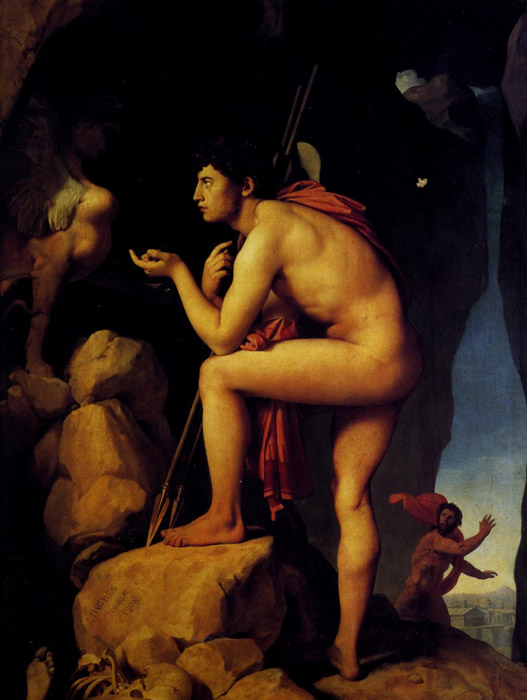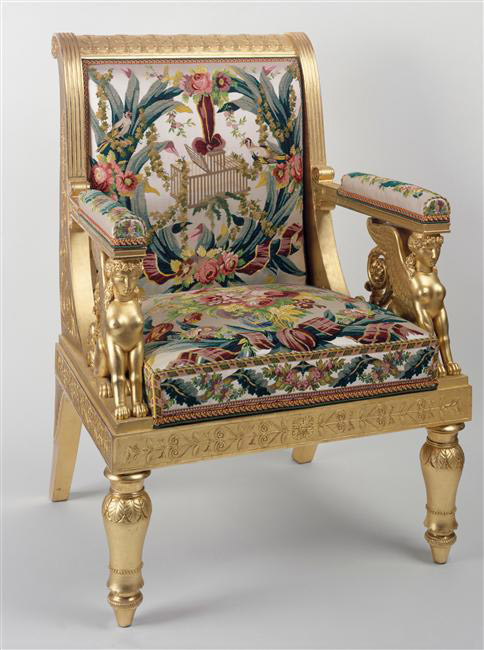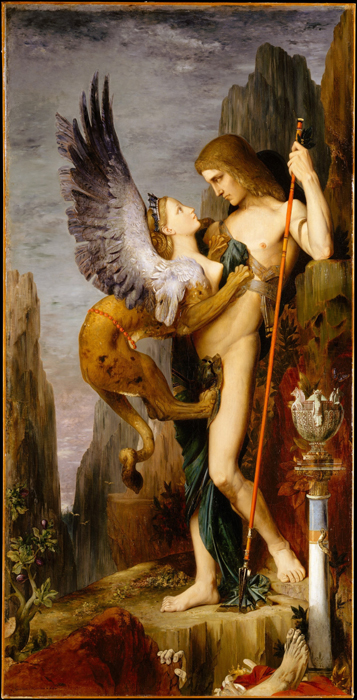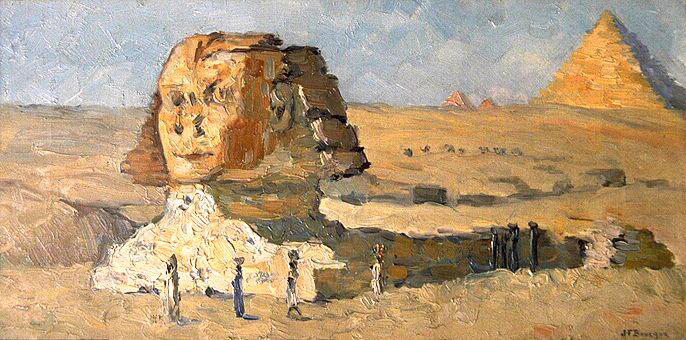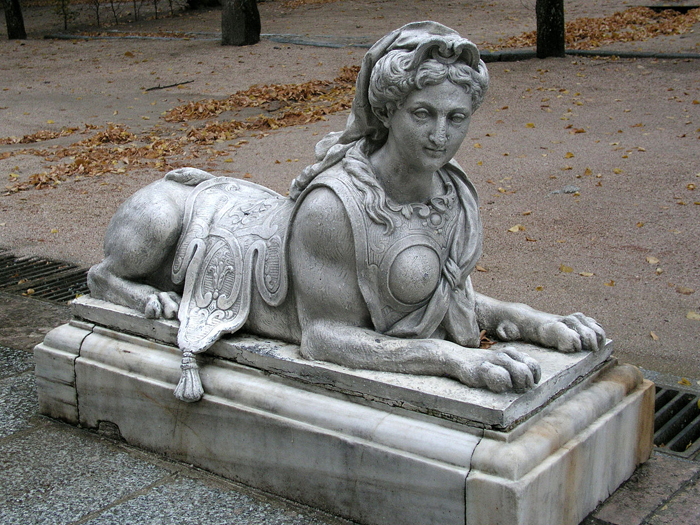Sphinx
Download PDFThe sphinx is a mythological creature that most often has a human bust and a lion's body, but sometimes a bull's or a horse's instead. This mythological creature can be represented with wings, a bull's horns, or a snake tail. It appeared in Egypt during the 3rd millennium BC, and then in the Ancient Near-East.
The Egyptian Sphinx :
The first sphinxes could have a human head (androsphinx), but sometimes had a ram's head (criosphinx) or a falcon's (hieracosphinx). They often wore a nemes, the striped head-cloth worn by pharaohs. As a protective animal, the sphinx was often sculpted into a throne, or on the armrests.
In Ancient Egypt, the Sphinx was foremost a guardian. It marked the entrances to royal residences and especially to tombs, like the famous Sphinx of Giza, constructed during the 4th Dynasty. An emblem of wisdom and strength, he became known as Her-em-akhet (“Horus on the horizon”), the horizon being the Giza plateau, and Horus being the Egyptian falcon god. A cult was established for the Giza Sphinx, and a small temple was built between its paws. During the Middle Empire, sphinxes were often in pairs, and starting at the time of the New Empire, there were avenues flanked with long rows of sphinxes leading to a temple.
Egyptian art evolved when it came into contact with the kingdoms of the Near-East throughout the New Empire. The orientalist female sphinx, often recumbent, wearing a crown of flowers or vegetation, with raised arms, became popular. Its female breasts were usually shown. In the Near-East, the sphinx is often linked to the goddess of fertility and love, Ishtar.
The Sphinx in the Ancient Near and Middle-East :
The Sphinx appeared in Mesopotamia during the 2nd millennium BC as a winged lion with a human head and bull's horns. Sphinxes were represented on seals, wall paintings, and as monumental statues in front of palace doors, like in Nimrud and Khorsabad. It was sometimes confused with the lamassu, a protective mythological Assyrian creature with a human head, a bull's or lion's body, and wings. It may be an Assyrian version of the sphinx.
The Greek Sphinx :
The oldest Greek sphinx that we know of is also from the 2nd millennium, around 1750 BC. It is a small terracotta figure that was attached to a vase or cup, representing a recumbent, winged male sphinx, probably with the head of a Minoan ruler, very similar to the Egyptian sphinx. 200 years later, the Greek sphinx became a winged female, inspired by the Near-Eastern sphinx.
The Greek sphinx would essentially remain a lion with a woman's bust. It was sometimes given the attributes of a Greek goddess like a feathered crown, a necklace with a spiral, and a row of spirals on its wings. The sphinx was represented on precious objects, often made of ivory and gold, like crowns and thrones. At the end of the Bronze Age, the sphinx practically disappeared from the Greek world, only to be reintroduced during the 8th century BC. From this time on, it was often represented on vases and sometimes confused with the centaur. Sphinxes were put into active situations, for example accompanying a hero to combat or surrounding Athena, and wearing helmets, diadems, or floral crowns.
From the 6th century BC, the sphinx was sometimes associated with death and destruction. Oedipus fought the creature to free the city of Thebes that it was terrorizing. The first representations of this myth seem to date back to the 6th century BC. A famous example of later iconography are the paintings by Gustave Moreau.
The Sphinx in Western Iconography :
The sphinx, a survivor of Egyptian imagery, always had an important place in Western iconography. From the second half of the 17th century, it became an essential ornament in jardins à la Française. It was commonly referred to as the “Egyptian lion”. Its iconography was rather approximate and fanciful, as the archeological truth was not taken into account until the end of the 18th century. The Empire period, after Napoleon's campaign in Egypt, was fond of Egyptian symbols. From this period onwards, “ Egyptomania ” and the sphinx, its prime example, have always fascinated and influenced the art world. The Symbolist current brought a new peak for mysterious Egyptian iconography.
Bibliography
Egyptomania, catalogue Louvre Museum exhibition 1994, Paris, 1994
J.-M. Humbert, Egyptomania in Western Art, Paris, 1989




